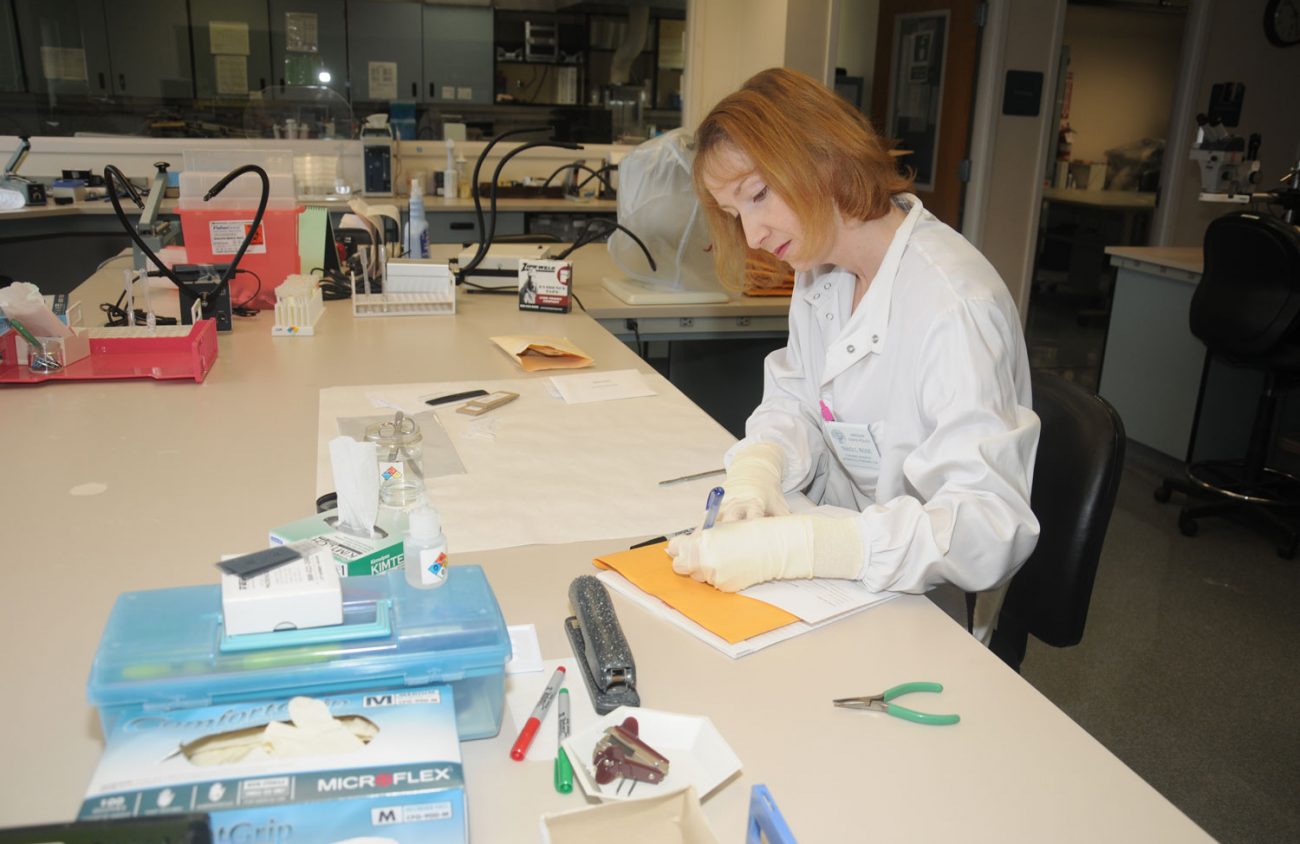Melissa’s Law was enacted in Oregon to ensure the transparency of tracking and testing rape kits. But when Eugene Weekly requested the mandated reporting numbers under the new law it was hard to get answers.
EW was also unable to tour a lab and see how rape kits are dealt with. In lieu of a tour, EW was sent staged photos.
The two-page summary EW received detailed the following numbers of SAFE kits obtained by Oregon State Police in 2016: total number of SAFE Kits received 1,281; total SAFE Kits completed 757; total number of pending SAFE requests 742.
The report was emailed to Eugene Weekly by OSP Forensic Director Capt. Alex Gardner, the former Lane County District Attorney. Gardner, who declined to be interviewed by phone or in person, would only communicate via email. He then stopped responding to emails before clarifying the breakdown of the numbers in the two-page report. The number of kits received, processed and pending didn’t add up, and it would take several weeks for officer Bill Fugate to provide an explanation.
“I’m not a mathematician, but those don’t seem to add up,” says OSP Public Information Officer Bill Fugate. He says the state crime lab’s capacity is what it was able to process — 757 kits.
However 757 completed kits, plus 742 request, equals 1,499 kits, not 1,281.
Under Melissa’s Law, SAFE kit numbers are required to be reported to the Oregon Legislature by Jan. 15. After requesting the totals reported to the Legislature and repeatedly asking how the numbers were calculated, this reporter sent several dozen emails, made two calls to Gardner, a dozen calls to Fugate and an exchange of text messages to Fugate seeking an explanation for the numbers.
On Feb. 10 via text, Fugate “confirmed that these numbers are correct.”
He includes a screen shot with the original numbers.
He wrote that the way he reads it was in 2016 OPS received 1,281 kits and completed 757, but he says some of those could have been received before 2016, and the same with the pending kits.
EW asked, “How far does that number date back?”
“I’ll check when I have time,” Fugate replied.
On Feb. 6, the number of SAFE kits processed was changed to 1,236. An email from Fugate read: “When we ran the initial computer reports SAFE kit requests were showing “completed” after our biologists checked “complete” on their portion of the process, but before the requests were finished with DNA processing. That error was caught and corrected before the final legislative report went out.”
But Feb. 10, EW received a voicemail saying the initial report was correct and reported to the Legislature. Fugate says the numbers didn’t add up because “there are some anomalies that occurred.”
EW initially requested a tour of an OSP forensic lab on Dec. 29, 2016. After sending multiple requests and reminders, on Feb. 3, EW received an email about a tour that read, “whenever we do these evidence needs to be removed from the work areas and other sensitive information to ensure evidence integrity … so tours are disruptive. Adds to backlog.”
